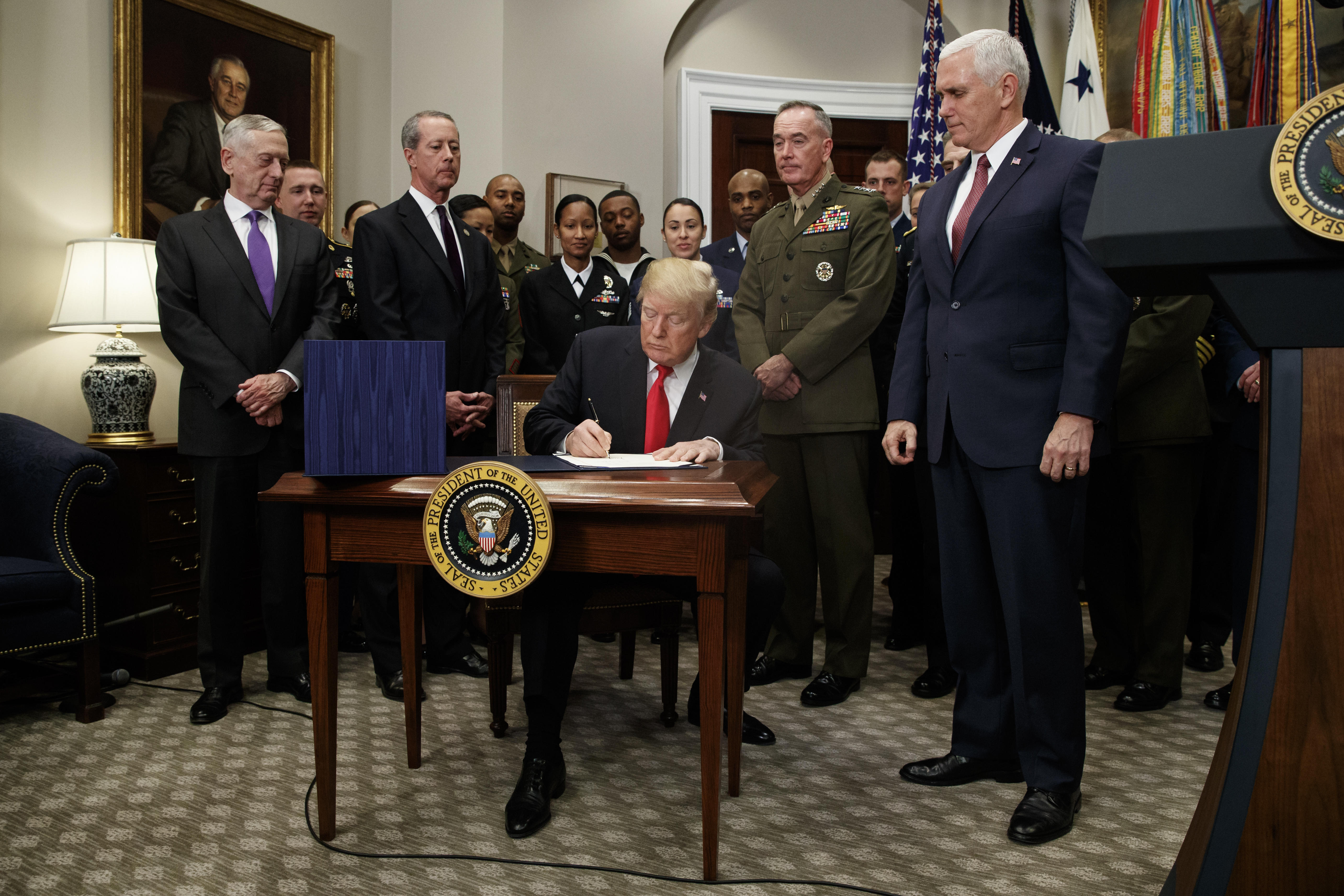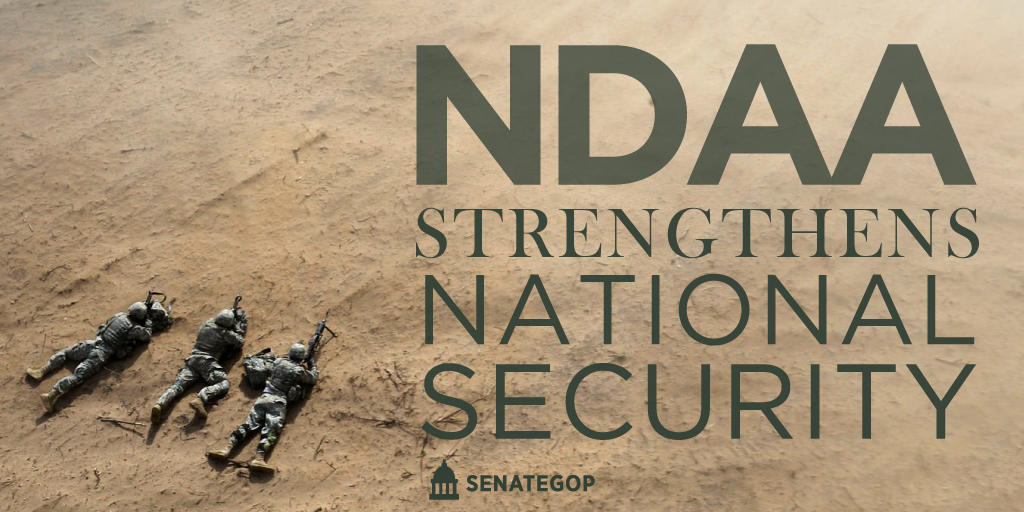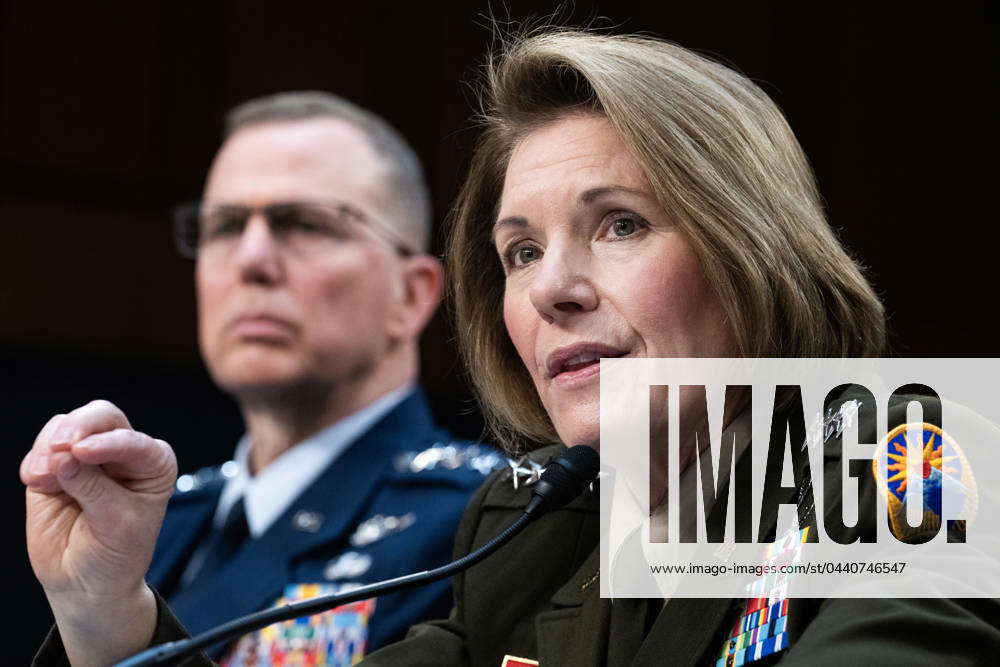The 2025 National Defense Authorization Act: Shaping the Future of American Military Power
The 2025 National Defense Authorization Act: Shaping the Future of American Military Power
Introduction
With great pleasure, we will explore the intriguing topic related to The 2025 National Defense Authorization Act: Shaping the Future of American Military Power. Let’s weave interesting information and offer fresh perspectives to the readers.
Table of Content

The 2025 National Defense Authorization Act: Shaping the Future of American Military Power
The National Defense Authorization Act (NDAA) is a piece of annual legislation that sets the policy and funding for the Department of Defense (DoD). It is a critical piece of legislation that shapes the nation’s military capabilities, posture, and strategic direction. The draft 2025 NDAA, currently under consideration by Congress, reflects the evolving national security landscape and aims to address emerging challenges, while maintaining a strong and capable military.
Key Provisions of the Draft 2025 NDAA:
1. Strengthening Deterrence and Defense Against Emerging Threats:
The draft NDAA recognizes the growing threats posed by Russia, China, and other state and non-state actors. It focuses on bolstering the military’s capabilities to deter aggression and respond effectively to these threats. This includes:
- Increased Funding for Modernization: The draft proposes significant increases in funding for the development and acquisition of advanced weapons systems, including hypersonic missiles, artificial intelligence, and cyber capabilities.
- Enhanced Force Posture: The legislation proposes adjustments to force posture, increasing presence in strategically important regions like the Indo-Pacific, and strengthening alliances to counter potential adversaries.
- Space and Cyber Defense: The draft emphasizes the importance of space and cyberspace as critical domains of conflict and allocates resources for developing robust defense capabilities in these areas.
2. Fostering Innovation and Technological Advancement:
The draft NDAA recognizes the critical role of innovation in maintaining a technological edge. It encourages the DoD to:
- Embrace Emerging Technologies: The draft encourages the adoption of disruptive technologies, such as artificial intelligence, autonomous systems, and advanced materials, to enhance military capabilities.
- Promote Research and Development: The draft proposes increased funding for research and development programs, fostering innovation in critical areas like hypersonics, directed energy weapons, and advanced computing.
- Collaborate with Industry: The draft emphasizes the importance of partnerships with private industry to accelerate the development and deployment of cutting-edge technologies.
3. Addressing Personnel Needs and Modernizing the Force:
The draft NDAA focuses on attracting, retaining, and developing a highly skilled and diverse military workforce. It proposes:
- Improving Compensation and Benefits: The draft proposes adjustments to pay, healthcare, and other benefits to make military service more attractive to potential recruits.
- Addressing Mental Health and Wellbeing: The draft emphasizes the importance of addressing mental health challenges among service members and their families, providing necessary support and resources.
- Promoting Diversity and Inclusion: The draft aims to create a more inclusive and diverse military, fostering opportunities for women, minorities, and individuals from all backgrounds.
4. Strengthening Partnerships and Alliances:
The draft NDAA recognizes the importance of strong alliances and partnerships in maintaining global security. It proposes:
- Strengthening NATO: The draft reaffirms the commitment to NATO and calls for increased defense spending by member countries.
- Developing New Partnerships: The draft encourages the development of new partnerships with like-minded countries to address shared security challenges.
- Promoting Cooperation: The draft emphasizes the importance of collaboration and information sharing among allies and partners to enhance collective security.
5. Addressing Climate Change and Environmental Sustainability:
The draft NDAA acknowledges the growing threat posed by climate change and its impact on national security. It proposes:
- Integrating Climate Change Considerations: The draft encourages the DoD to incorporate climate change considerations into its planning, operations, and infrastructure development.
- Investing in Sustainable Technologies: The draft proposes funding for research and development of sustainable technologies, such as renewable energy sources and energy-efficient systems, to reduce the military’s environmental footprint.
- Improving Resilience: The draft emphasizes the importance of building resilience to the impacts of climate change, such as extreme weather events and rising sea levels.
Importance and Benefits of the Draft 2025 NDAA:
The draft 2025 NDAA is crucial for maintaining a strong and capable military that can effectively deter threats and protect national interests. Its provisions aim to:
- Ensure a Strong and Deterrent Military: The draft invests in modernizing the military, enhancing its capabilities, and ensuring its readiness to address emerging threats.
- Promote Innovation and Technological Advantage: The draft encourages the adoption of cutting-edge technologies, fostering innovation and maintaining a technological edge over potential adversaries.
- Attract and Retain a Skilled and Diverse Workforce: The draft aims to attract and retain a highly skilled and diverse military workforce by improving compensation, benefits, and working conditions.
- Strengthen Alliances and Partnerships: The draft reinforces the importance of international cooperation and strengthens existing alliances, building a robust network of partners to address shared security challenges.
- Address Climate Change and Environmental Sustainability: The draft acknowledges the impact of climate change on national security and encourages the DoD to adopt sustainable practices and build resilience to its effects.
FAQs by Draft 2025 NDAA:
Q: What are the key challenges addressed by the draft 2025 NDAA?
A: The draft 2025 NDAA addresses the growing threats posed by Russia, China, and other state and non-state actors, the need to maintain a technological edge, the importance of a skilled and diverse military workforce, the need to strengthen alliances and partnerships, and the impact of climate change on national security.
Q: How does the draft 2025 NDAA address the need for innovation and technological advancement?
A: The draft encourages the DoD to embrace emerging technologies, promote research and development, and collaborate with private industry to accelerate the development and deployment of cutting-edge technologies.
Q: What are the main provisions related to personnel needs and modernizing the force?
A: The draft proposes adjustments to pay, healthcare, and other benefits to attract and retain a skilled workforce. It also emphasizes addressing mental health challenges and promoting diversity and inclusion.
Q: How does the draft 2025 NDAA address climate change and environmental sustainability?
A: The draft encourages the DoD to integrate climate change considerations into its planning, operations, and infrastructure development, invest in sustainable technologies, and improve resilience to the impacts of climate change.
Tips by Draft 2025 NDAA:
- Embrace Emerging Technologies: The draft encourages the DoD to adopt disruptive technologies, such as artificial intelligence, autonomous systems, and advanced materials, to enhance military capabilities.
- Invest in Research and Development: The draft proposes increased funding for research and development programs to foster innovation in critical areas like hypersonics, directed energy weapons, and advanced computing.
- Strengthen Partnerships and Alliances: The draft encourages the development of new partnerships with like-minded countries and promotes cooperation among allies to address shared security challenges.
- Promote Diversity and Inclusion: The draft aims to create a more inclusive and diverse military, fostering opportunities for women, minorities, and individuals from all backgrounds.
- Integrate Climate Change Considerations: The draft encourages the DoD to incorporate climate change considerations into its planning, operations, and infrastructure development.
Conclusion by Draft 2025 NDAA:
The draft 2025 NDAA reflects the evolving national security landscape and provides a roadmap for maintaining a strong and capable military that can effectively deter threats and protect national interests. It focuses on bolstering defense capabilities against emerging threats, fostering innovation and technological advancement, addressing personnel needs, strengthening alliances, and addressing climate change. As the draft moves through the legislative process, it is crucial for Congress to carefully consider its provisions and ensure that the final legislation reflects the nation’s evolving security needs and prioritizes the long-term strength and resilience of the US military.








Closure
Thus, we hope this article has provided valuable insights into The 2025 National Defense Authorization Act: Shaping the Future of American Military Power. We hope you find this article informative and beneficial. See you in our next article!